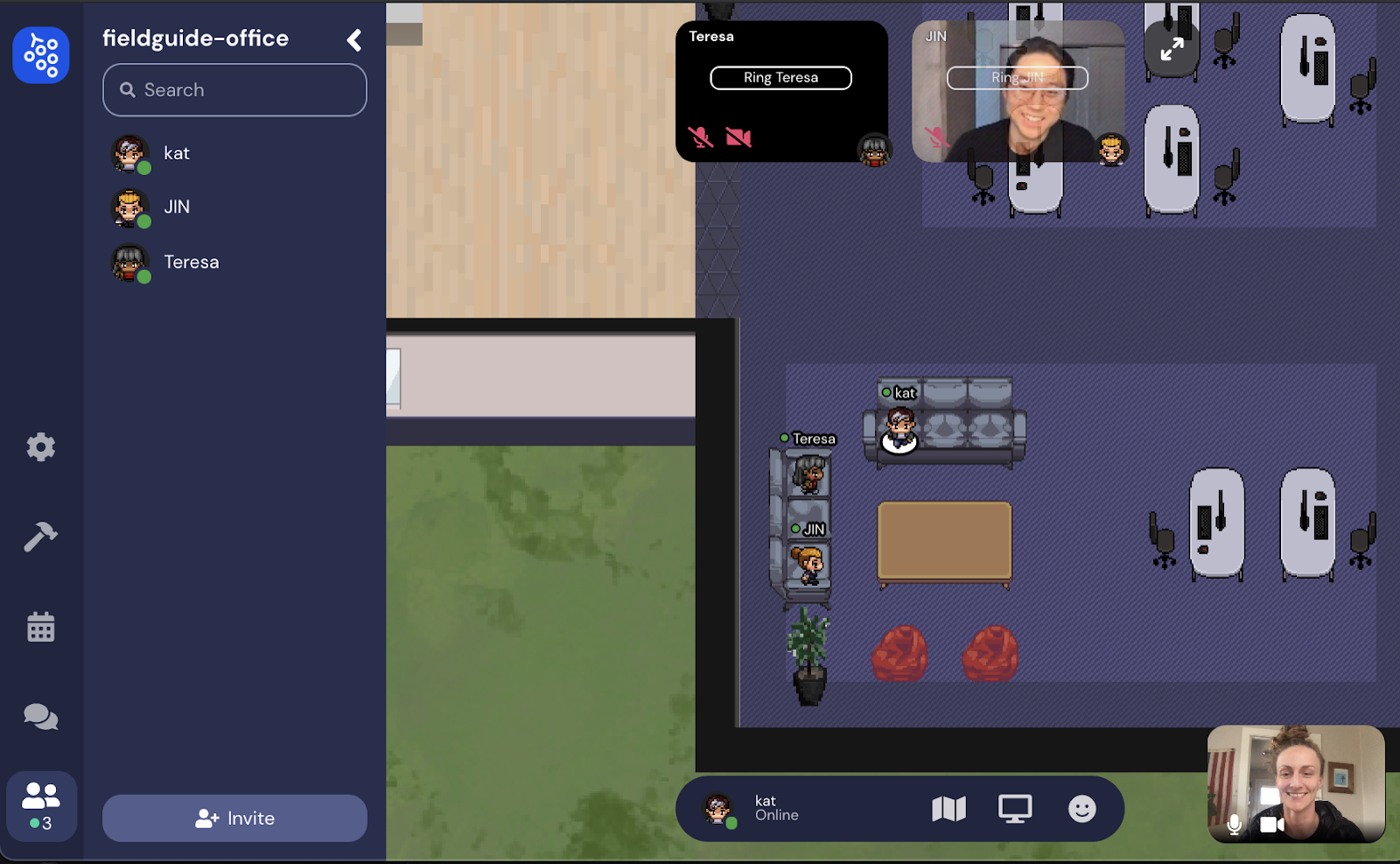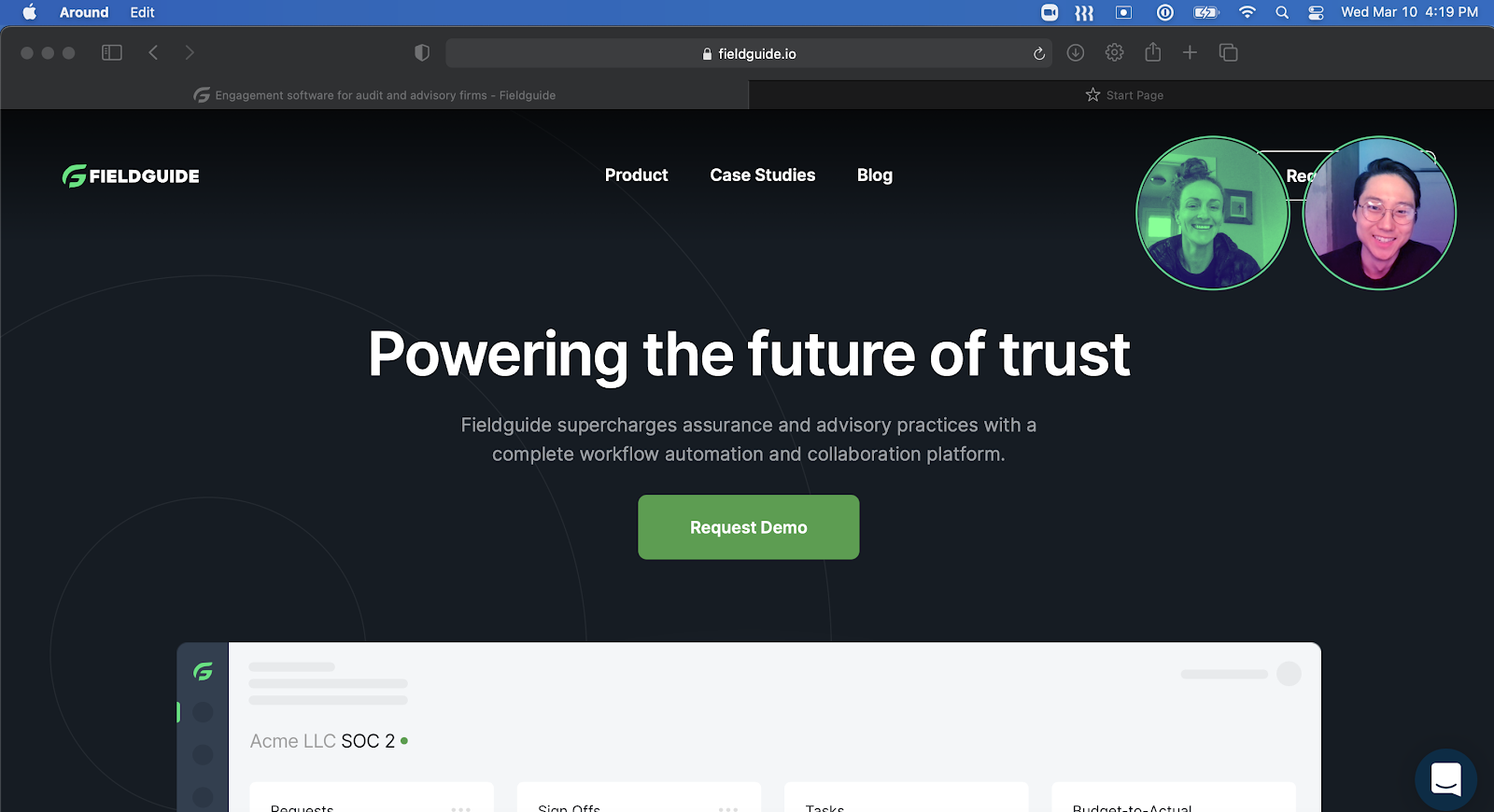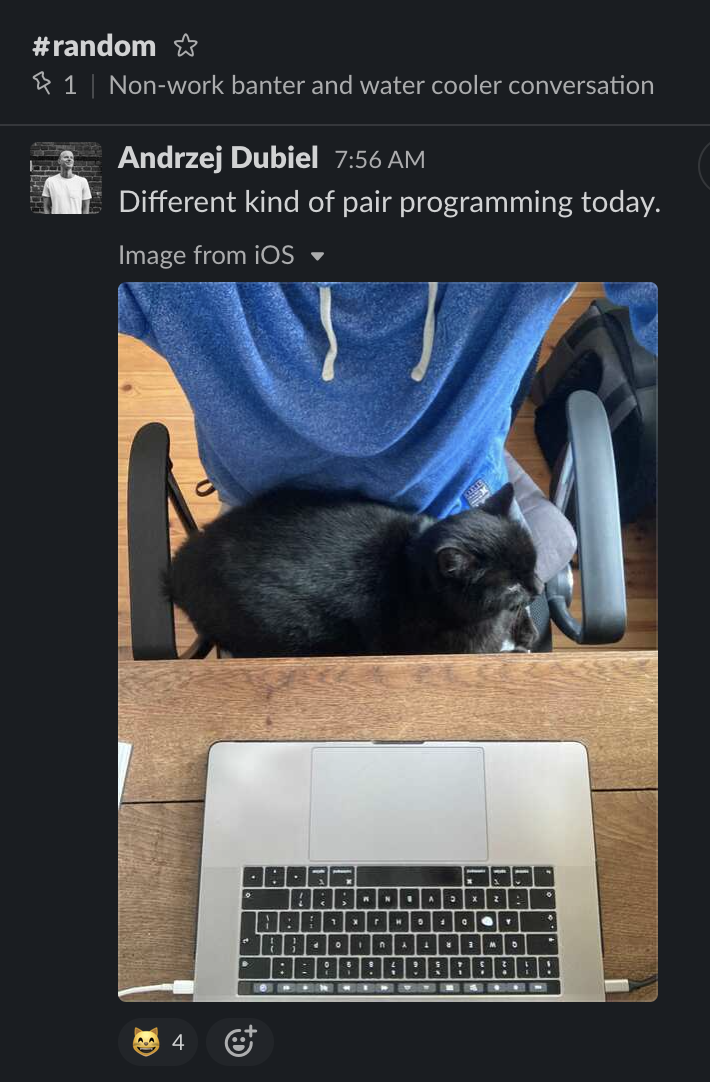Related posts
See all

In 2020, many firms were suddenly thrown into the unknown frontier of remote working. Out went the usual routine of working in the office and client site; in came the new routine of dialing into Zoom meetings, virtually onboarding new staff, staying in sync over Slack or Microsoft Teams, and simply adjusting to the challenges of WFH (work from home) life.
Founded in 2020, Fieldguide was built as a remote-friendly, globally distributed company. Some of our team members haven't met in person or worked together in an office. While this might seem challenging, our team has embraced and thrived in this environment. We've built on a strong culture based around values of trust and collaboration, while launching the Fieldguide platform and delivering innovation and value to practitioners.
In this blog, you’ll get a behind-the-scenes look into how we work remotely at Fieldguide. We'll share five best practices to improve collaboration, productivity, and communication that you can incorporate into your practice today.
In the office, gathering for daily and weekly meetings was commonplace. Continue these syncs virtually in the form of "standups." At Fieldguide, we have daily 15-minute standups in which each team member shares their progress, plan for the day, and blockers. These quick meetings kick off each day with productive energy and keeps the team executing well to their goals. Additionally, team members facing blockers can solicit and receive assistance from the rest of the group, often surfacing creative and collaborative solutions.
Daily standups can either be synchronous or asynchronous. On-camera video calls for synchronous standups are best for creating a close-knit dynamic. Create a Slack or Teams channel for team members to asynchronously post their daily standup and comment on other team member's posts.
Want to feel like you're working in the same room, despite not physically being with your remote coworkers? Since traditional video conference apps like Zoom or Microsoft Teams can sometimes feel too formal or structured, our team has researched and tested new apps and tools to help us stay connected in creative ways:


In remote or hybrid working conditions, proactive communication is critical, especially when team members work across time zones (at Fieldguide, our team is scattered across nine timezones). To set and align expectations across the team, we use our Slack status updates to communicate our working hours and brief breaks, like "grabbing coffee" or "taking lunch". For large teams, a shared board or calendar helps reconcile availability across many stakeholders (along with diligent individual calendar upkeep).
Proactive communication also ensures that small pieces of information or work that usually get passed verbally between coworkers is not lost. When communicating timing, consider how your message is delivered:
Compared to working in a traditional office, building bonds and interpersonal relationships among remote team members requires extra effort. Scheduled interactions, such as recurring biweekly or monthly 1:1s, enable coworkers to catch up on projects or life happenings. When performed across business or service lines, these interactions also foster collaboration and communication across departments. Additionally, ad hoc and organic meetings, such as coffee chats or lunches, can be conducted over Zoom or other virtual platforms to catch up and feel connected again.
At Fieldguide, we foster our remote community over dedicated channels in Slack:

Regular and encouraged use of channels like these can foster a closer-knit community and culture for your practice.
Digitizing and automating workflows in the cloud is critical for efficient and higher quality remote work. A centralized platform for project management and collaboration, like Fieldguide, can help your team work more efficiently, deliver higher quality work, and collaborate with tech-enabled service to clients. Some of the benefits of adopting a shared platform such as Fieldguide include:
The age of remote work can serve as a catalyst to cement your company culture, improve communication practices, and invest in game-changing technology solutions. It’s time to embrace new ways of working to deliver innovation and more value to your clients.
Want to see how Fieldguide can power your practice, whether in the office, remote or in-between? Request a demo today, or learn more about our product.

